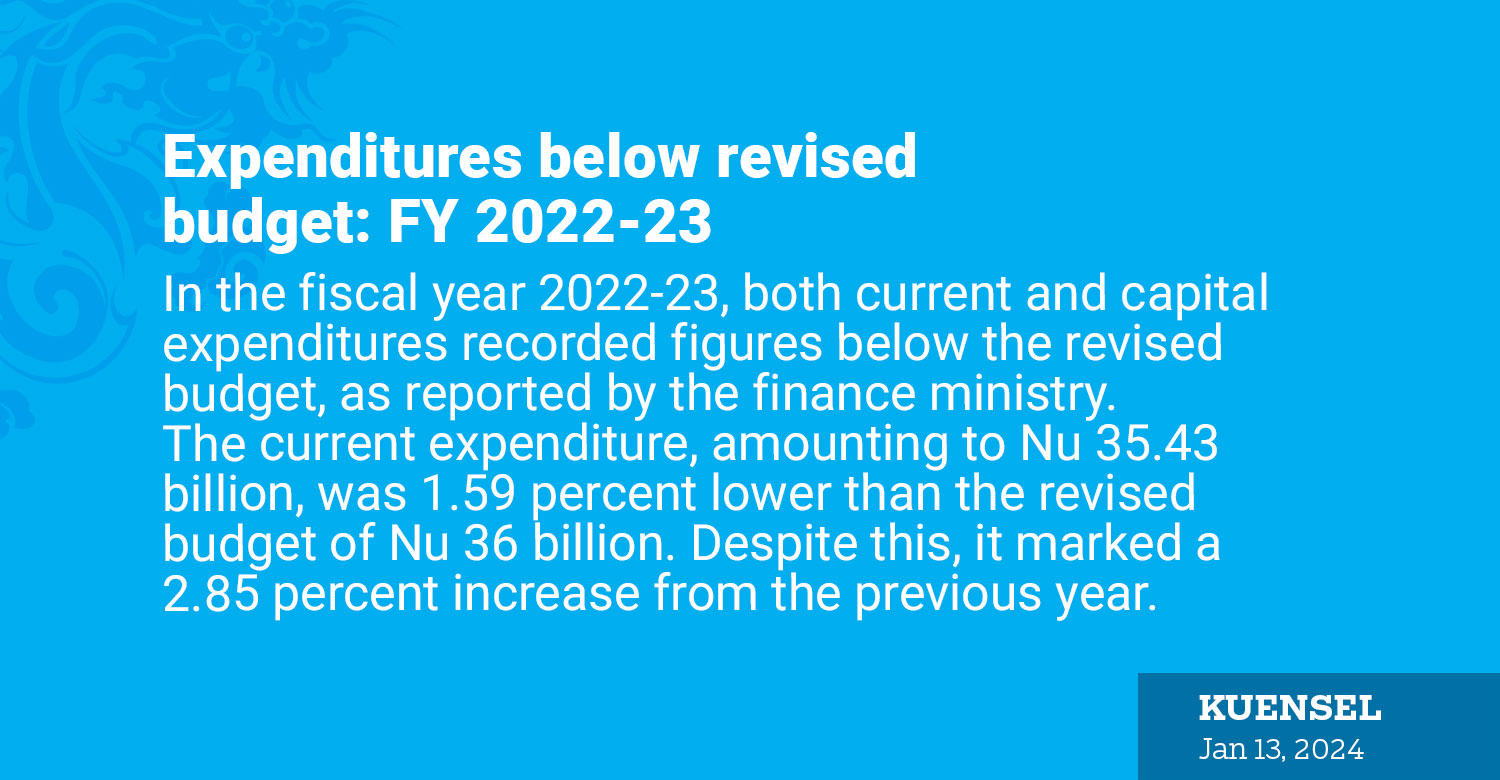Thukten Zangpo
In the fiscal year 2022-23, both current and capital expenditures recorded figures below the revised budget, as reported by the finance ministry.
The current expenditure, amounting to Nu 35.43 billion, was 1.59 percent lower than the revised budget of Nu 36 billion. Despite this, it marked a 2.85 percent increase from the previous year.
The primary funding sources for government investments were grants, loans, and domestic revenue. Notably, medical benefits, retirement benefits, interest payments, and property maintenance expenses increased by 87.11 percent, 54.8 percent, 35.06 percent, and 14.21 percent, respectively.
By function, housing and public amenity services saw a rise of 36.38 percent, social services by 34.87 percent, and economic services by 11.16 percent.
The top five current expenditures included pay and allowances at 45.32 percent (Nu 17.26 billion), interest payment for external borrowings at 8.11 percent (Nu 4.04 billion), retirement benefits at 4.97 percent (Nu 1.76 billion), provident fund and pension contributions at 4.23 percent (Nu 1.5 billion), and stipends at 3.62 percent (Nu 1.28 billion).
Simultaneously, actual capital expenditure decreased by 23.5 percent to Nu 33.52 billion compared to the revised capital budget of Nu 43.34 billion. This decline was attributed to reduced spending on disaster-related expenses, immovable property acquisition, human resource development training, plant and equipment purchase, and capital grants or equity shares.
The top five capital expenditures included construction of buildings at 26.34 percent (Nu 8.9 billion) and construction of roads at 25.2 percent (Nu 8.52 billion). Expenditure on other structures, professional services, and water supply and sanitation accounted for 8.53 percent (Nu 2.88 billion), 6.04 percent (Nu 2.04 billion), and 6.03 percent (Nu 2.04 billion), respectively.
With actual domestic revenue reaching Nu 44.87 billion, surpassing the projected revenue of Nu 36.37 billion by 23.39 percent (Nu 8.51 billion), the fiscal deficit was recorded at 4.73 percent of the GDP, slightly below the targeted 5 percent.
Recurrent expenditures were fully covered by domestic revenue, exceeding the mandate set by the Constitution, with a surplus of 1.26 times.
The increase in domestic revenue was attributed to improvements in tax collection and current revenue from government agencies, constituting 18.93 percent of the GDP. Total tax revenue accounted for 70.12 percent of the domestic revenue, while non-tax revenue contributed 29.88 percent.


